Be careful when using non-prescription drugs without a prescription.
One of the typical manifestations of drug allergy is a red rash all over the body, typically erythema migrans - a form of drug allergy that is recurring but easily overlooked if not properly diagnosed.
Illustration photo. |
The case of patient LAT (48 years old, Hanoi ) at Medlatec Tay Ho General Clinic is a clear demonstration of the importance of vigilance and caution when using drugs on your own, especially non-prescription drugs.
Mr. LAT came to Medlatec General Clinic, Tay Ho with a red rash spreading all over his body, accompanied by lesions in the genital area.
According to him, these symptoms appeared after using antibiotics and painkillers containing paracetamol, prescribed after wisdom tooth extraction surgery. In particular, a similar phenomenon occurred 2 years ago when he used cold medicine.
Through clinical examination, the doctor noted that the patient had a dark red rash, clear boundaries, size from 2-5cm, distributed in the neck, abdomen, genitals and thighs. The lesions did not feel itchy or painful and did not spread deep under the skin. Test results showed that the patient's blood IgE index was abnormally high, a typical sign of an allergic reaction.
Based on clinical symptoms and test results, the doctor diagnosed Mr. LAT with erythema migrans, a specific type of allergic reaction that recurs in the same location every time the patient is exposed to the allergen again, in this case paracetamol.
Immediately, the doctor asked the patient to completely stop using drugs containing paracetamol and prescribed outpatient treatment to control skin lesions and avoid complications.
According to Dr. Nguyen Thu Trang, a dermatologist at Medlatec Tay Ho Clinic, fixed erythema pigmentosa is a specific type of allergic skin reaction caused by drugs, characterized by skin lesions that recur in the same location each time the patient is exposed to the drug causing the allergy. This disease is easily confused with other dermatological diseases if not diagnosed correctly and treated promptly.
The disease often appears after using certain medications such as pain relievers and fever reducers (especially paracetamol), antibiotics (sulfonamides, tetracycline...), anticonvulsants, or over-the-counter cold medications.
Symptoms include dark red, sharply-edged patches several centimeters in size, sometimes accompanied by blistering and mild or no itching. Lesions commonly appear on the lips, genitals, inner thighs, hands, and abdomen and recur in these locations each time the offending drug is used again. After the lesions heal, the patient may experience persistent dark hyperpigmentation.
Treatment of erythema pigmentosa begins with stopping the allergy-causing medication immediately. Your doctor may prescribe topical anti-inflammatory medications or antihistamines if necessary. In particular, you should be advised not to use the allergy-causing medication again, because each recurrence can cause the lesions to spread and cause more serious complications.
One of the most prominent problems today is the increasingly common use of over-the-counter drugs, especially cold, pain, and fever-reducing drugs such as paracetamol or combination antibiotics. People often have the habit of "doing their own doctor", buying drugs without consulting a doctor or pharmacist, which poses a high risk of adverse reactions.
Seemingly harmless ingredients like paracetamol, found in many cold, fever and pain relievers, can still cause serious allergic reactions, such as erythema multiforme.
The case of patient LAT is a typical example showing that lack of understanding of drug ingredients and personal allergy history can lead to systemic skin lesions, seriously affecting quality of life.
BSCKI. Nguyen Thu Trang recommends that to protect one's health, people need to carefully read the ingredients of the medicine before using it, especially if they have a history of allergies.
Do not take multiple medications at the same time if you are not sure about their interactions. Always consult your doctor or pharmacist before taking any medication for a long time or if you experience any unusual symptoms after taking the medication.
Keep a record of any medications that have caused an allergic reaction so you can inform your doctor at your next visit. In addition, if you experience unusual redness, itching, swelling, or difficulty breathing after taking the medication, you should quickly go to a medical facility for examination and timely treatment.
The arbitrary use of non-prescription drugs can cause serious allergic reactions that the patient cannot foresee. Therefore, it is very important to be careful and carefully understand the ingredients of the drug before use, especially for people with a history of allergies. Erythema fixata pigmentosa is a typical example of allergic reactions that can occur when using drugs incorrectly, and early detection will help patients avoid serious complications.
Saving a pregnant woman with a rare syndrome
Acetate twin syndrome is a rare but extremely dangerous abnormality in which one fetus develops without a heart and depends completely on the circulation of the other fetus.
This condition can overload the normal fetus's circulation, leading to heart failure, fetal edema and a high risk of death if not treated early. A special case has just been successfully treated at Hanoi Obstetrics Hospital, bringing boundless happiness to the pregnant woman's family.
Ms. CTK Huyen (born in 1998, residing in Nghi Loc, Nghe An ) was pregnant with twins with two amniotic sacs and one placenta. However, during a medical examination at a medical facility in Nghe An, she was diagnosed with acardiac twin syndrome.
Accordingly, one of the two fetuses (fetus B) has no heart, no head and no arms, while fetus A is still developing normally. The development of fetus A has overloaded the circulation, forcing fetus A to take on the task of nourishing fetus B.
If not treated promptly, this condition can lead to heart failure in fetus A and seriously affect the health of both mother and baby.
Ms. Huyen was referred to Hanoi Obstetrics and Gynecology Hospital, which is capable of performing advanced fetal intervention techniques. Here, doctors at the Fetal Intervention Center conducted a detailed diagnosis, determining that fetus A developed equivalent to 16 weeks and 6 days, while fetus B had no heartbeat.
After consulting with the hospital's Board of Directors, Dr. Phan Thi Huyen Thuong, Head of the Fetal Intervention Center, Dr. Do Tuan Dat, Head of the Department of Obstetrics and Gynecology A4 and Associate Professor, Dr. Le Thi Anh Dao, Head of the Department of Gynecology and Surgery A5, together with the team of doctors, successfully performed the timely intervention method. After treatment, the condition of the fetus was stable, fetus A continued to develop normally, while fetus B had no further complications.
Currently, the health of Ms. Huyen and the fetus is stable and progressing well. The patient has been discharged from the hospital and continues to monitor the pregnancy. This case is a typical example of the importance of early detection and treatment of abnormalities in pregnancy, thanks to timely and accurate intervention by doctors, helping mother and baby overcome danger.
Doctors recommend that pregnant women need to have regular prenatal check-ups and choose highly specialized medical facilities to detect potential risks early, thereby being able to intervene promptly, protecting the health of mother and fetus.
Artificial shoulder surgery helps patients
At Tam Anh General Hospital in Ho Chi Minh City, a case of silent rotator cuff tear that damaged the shoulder joint was successfully treated with total shoulder replacement surgery.
The patient, Ms. Kieu, 65 years old, had been hospitalized with increasing weakness in her right arm for two months. After examination and diagnosis, Ms. Kieu was diagnosed with a torn rotator cuff tendon and severe shoulder osteoarthritis.
According to Master, Doctor, Specialist I Ho Van Duy An, Orthopedic Trauma Center, Tam Anh General Hospital, the rotator cuff tendon tear may have appeared several years ago.
Approximately 30-50% of rotator cuff tears develop silently without obvious symptoms, making patients often unaware until the condition becomes severe. When symptoms such as shoulder pain and difficulty moving clearly appear, the disease is already in an advanced stage, seriously affecting daily activities.
The rotator cuff tendons consist of four important muscles: the subscapularis, supraspinatus, infraspinatus, and teres minor. These muscles work together to help the shoulder joint perform arm movements such as raising, lowering, and extending forward or backward.
In Ms. Kieu’s case, the MRI scan revealed that she had degenerative shoulder arthritis due to a major tear in the rotator cuff tendon, with three of the four tendons torn (the supraspinatus, infraspinatus, and teres minor), while the remaining subscapularis tendon was only slightly damaged. This caused Ms. Kieu to be in pain and unable to lift her arm, making it difficult for her to perform daily activities such as dressing, combing her hair, or reaching for items from above.
With her severe condition, total shoulder replacement surgery is the only treatment option for Ms. Kieu. However, Ms. Kieu also has underlying diseases such as thyroid disease, high blood pressure and Cushing's disease due to long-term use of painkillers for bone and joint pain, so the doctor has stabilized her medical condition before surgery to avoid complications during and after surgery.
Ms. Kieu underwent total shoulder replacement surgery using the anterior approach through the thoracic deltoid (going between the pectoral muscle and deltoid muscle) with an incision approximately 8-10 cm long.
This technique allows the surgeon to access the shoulder joint without cutting the muscle, thereby limiting damage to blood vessels and nerves. This method not only helps reduce pain and blood loss but also allows the patient to quickly recover after surgery. Torn rotator cuff tendons are also sutured, especially the subscapularis tendon, to stabilize the shoulder joint and avoid the risk of shoulder dislocation - a common complication of shoulder replacement.
After a successful surgery lasting more than 45 minutes, Ms. Kieu began to feel a clear reduction in pain on the first day after surgery. She could extend her arm forward about 90 degrees without any pain, her recovery was good and she was discharged from the hospital afterwards.
However, Ms. Kieu will need to wear a support belt for 4 weeks so that the sutured tendon can heal properly. It is expected that after 2-3 months of physical therapy, she will be able to live almost normally and return to daily activities.
According to Dr. An, rotator cuff tears in the elderly are not caused by trauma but mainly by the natural degenerative process. Initially, when one tendon is torn, the remaining tendons will take over to maintain the function of the shoulder joint.
This condition will become increasingly serious, causing damage to other tendons, leading to pseudo-paralysis, making the patient unable to lift the shoulder. This causes difficulty in daily activities and reduces the patient's quality of life.
Rotator cuff tears, if not treated promptly, can promote progressive degeneration and lead to shoulder weakness. This is a disease that progresses silently and has no obvious symptoms in the early stages, so patients need to pay attention to regular health check-ups and promptly detect abnormalities to have appropriate treatment plans.
To prevent rotator cuff tears and related complications, Dr. An recommends that patients maintain a healthy lifestyle, perform appropriate exercises to strengthen muscles and reduce the risk of osteoarthritis. At the same time, care and treatment of underlying diseases are also very important to avoid factors that aggravate tendon tears or osteoarthritis.
Rotator cuff tear is a disease that progresses silently, so early detection and timely treatment can help prevent serious complications and improve the patient's quality of life.
Risk of brain and meningeal herniation due to cerebrospinal fluid leakage through the ear
Recently, at the Central Ear, Nose and Throat Hospital, doctors promptly discovered and successfully treated Pham Dinh D., 9 years old, who had cerebrospinal fluid leakage through the ear, a rare condition with many potential risks.
The patient was admitted to the hospital with continuous clear fluid discharge from the left external ear canal without any symptoms of headache, dizziness or facial paralysis. Previously, the family had taken the child to many medical facilities and was diagnosed with otitis externa, but the condition did not improve after many treatments.
Pham Dinh D., a child living in Bach Thong, Bac Kan, had symptoms of fluid discharge from his left ear about two weeks before being admitted to the hospital. Although he occasionally had a mild fever, he did not have serious symptoms such as headache or dizziness.
The family took the child to many places for examination, and through the initial diagnosis, the child was treated with medicine for otitis externa, but the condition showed no signs of improvement. The fluid in the ear continued to flow continuously, making the family very worried.
After examination and paraclinical tests, including otoscopy, CT scan and MRI, doctors diagnosed the baby with encephalocele and meningocele through the left temporal bone, leading to cerebrospinal fluid leakage through the ear. This is a rare and serious condition, requiring timely medical intervention to avoid dangerous complications.
According to Dr. Le Anh Tuan, Deputy Director of the Hospital, Head of the Department of Pediatric Otorhinolaryngology, cerebrospinal fluid leakage through the ear is the result of brain and meningocele. This is a phenomenon in which brain tissue, meninges and cerebrospinal fluid escape from the skull cavity.
In ENT, this hernia can occur in the nasal cavity or through the ear, but hernia through the temporal bone is very rare. The cause can be congenital, after trauma or complications of previous surgery.
When brain and meningeal herniation occurs, and especially when accompanied by cerebrospinal fluid leakage, this condition can cause many serious complications such as meningitis, brain abscess, and can lead to death if not treated promptly. Therefore, early detection and immediate treatment are important factors to protect the patient's health.
After consulting with neurosurgeons of Bach Mai Hospital, the doctors decided to perform surgery on baby D. This is a complicated surgery that requires precision and meticulousness, because the brain tissue that has herniated through the defect of the brain fossa floor has degenerated, no longer having the normal function and morphology of the brain parenchyma.
Doctors performed a dissection of the brain herniation and meninges of the left temporal bone, and used autologous materials combined with biological glue to patch the meninges and fill the skull defect.
The surgery was successful after more than 4 hours, and baby D. recovered well immediately after. The child no longer had ear discharge and his health was stable. After 10 days of treatment at the hospital, the patient was discharged and continued to be monitored periodically.
After 3 months of follow-up examination, baby D. has completely recovered, with no signs of recurrence of the disease. The child has returned to normal school and daily life without any complications or worrying symptoms. Baby D.'s family could not hide their joy and gratitude to the doctors and medical staff who have devoted themselves to treating their child.
The family shared that when the doctor told us that surgery was needed, we were very worried about the possible effects on our child's brain. Fortunately, after the surgery, our child did not feel much pain, and now he has fully recovered. Our family is extremely grateful to the doctors and medical staff at the hospital for their dedicated care and treatment of our child.
Dr. Le Anh Tuan warns that abnormal discharge through the external ear canal can be easily confused with otitis externa or acute otitis media with pus.
However, if the ear discharge persists without symptoms such as headache or fever, the patient needs to be vigilant and go to a reputable ENT hospital. If not diagnosed and treated promptly, this condition can lead to dangerous complications such as encephalitis, meningitis, or seriously affect health, even threaten life.
Cerebrospinal fluid leakage through the ear, although a rare condition, can lead to serious complications if not detected and treated promptly. Correctly identifying the symptoms and seeking specialized medical care is extremely important to protect the health and avoid dangerous complications for the patient.
Source: https://baodautu.vn/tin-moi-y-te-ngay-246-can-trong-khi-tu-y-su-dung-thuoc-khong-ke-don-d312459.html



![[Photo] Prime Minister Pham Minh Chinh receives President of Cuba's Latin American News Agency](/_next/image?url=https%3A%2F%2Fvphoto.vietnam.vn%2Fthumb%2F1200x675%2Fvietnam%2Fresource%2FIMAGE%2F2025%2F12%2F01%2F1764569497815_dsc-2890-jpg.webp&w=3840&q=75)










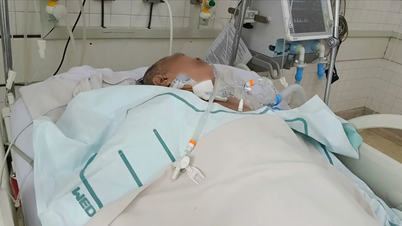

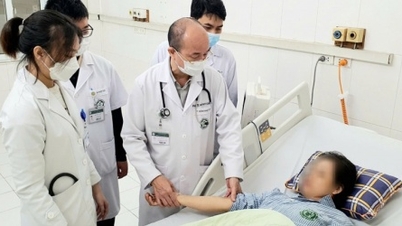

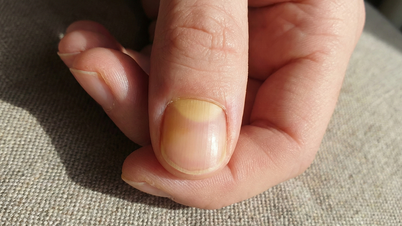
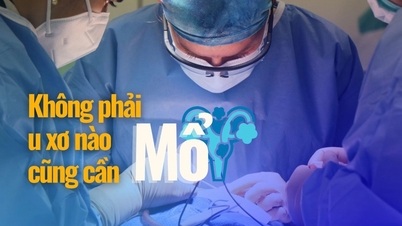

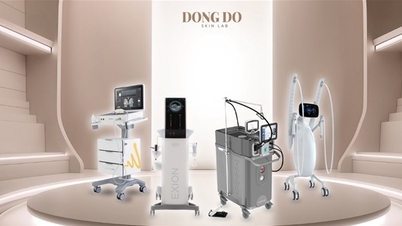





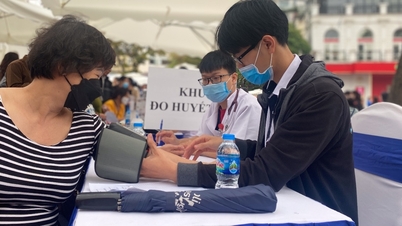




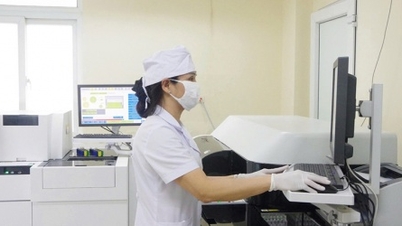












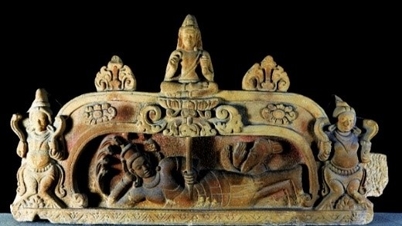






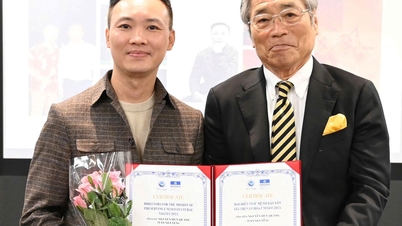

























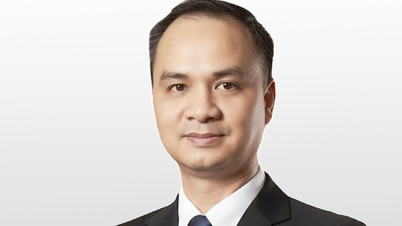































Comment (0)